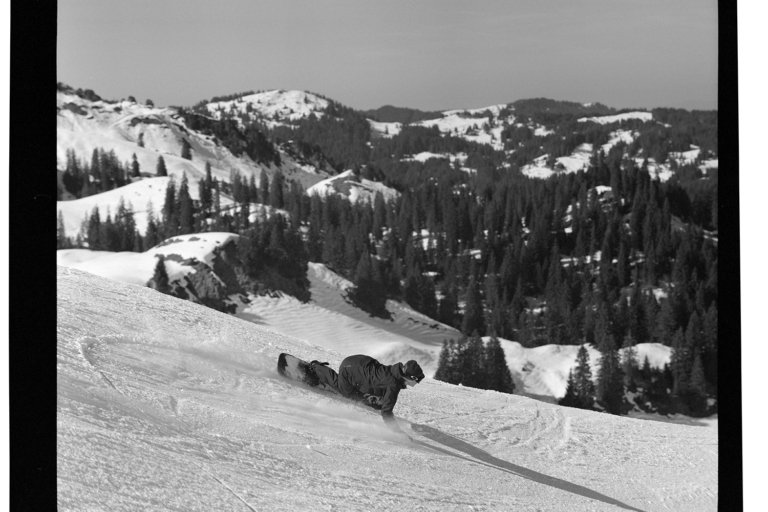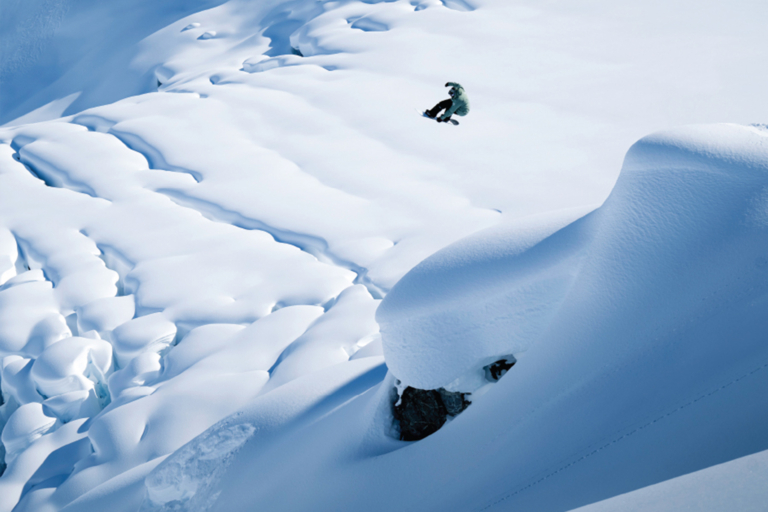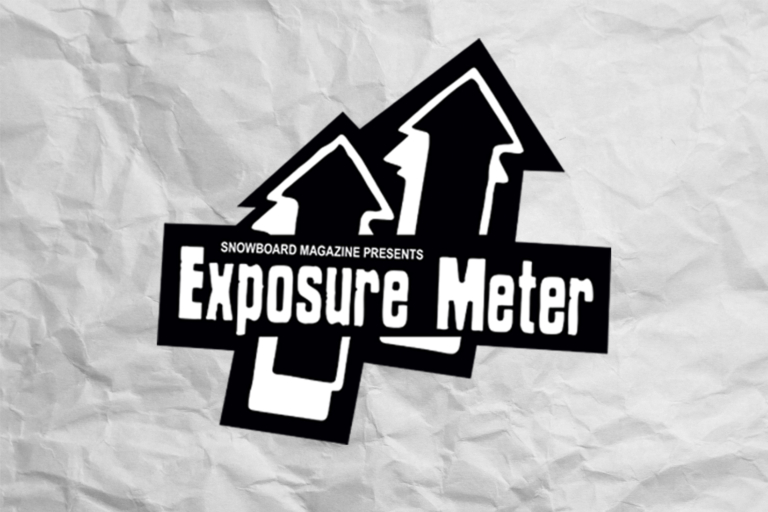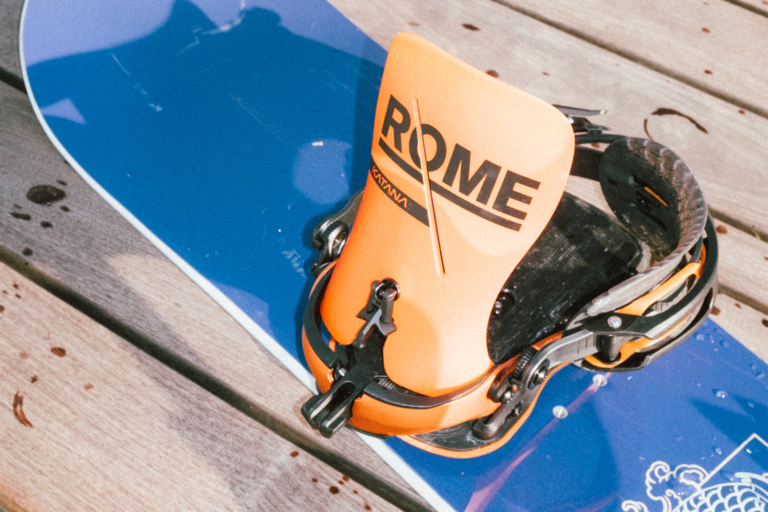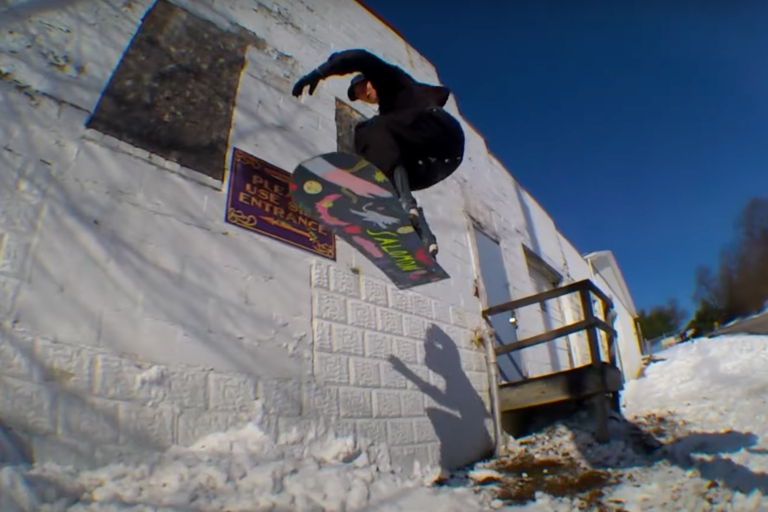Outside a doctor’s office in Bend, OR is a white, flatbed Ford F-350. In it sits Austin Smith. Paralyzed by shock and anxiety, the news he just received has left him devastated; he has torn his ACL — again. This is the third consecutive ACL tear and the third time a doctor has told him he cannot snowboard for yet another season.
In 2008, Austin entered the snowboard industry in a big way. After his ending part in Mack Dawg Productions’ “We’re People Too,” he grabbed Transworld Snowboarding’s Rookie of the Year award, and the ever-competitive Video Part of the Year. In turn, Austin earned contracts with high-profile companies like Nike, Nitro, and Dakine, to name a few. Nike’s brand manager Bobby Meeks considers Austin an exceptional rider. “He is really young, self motivated and down to earth. That is one thing that is so appealing about Austin. He just gets it,” says Meeks. On the heels of his initial success, Austin dropped another heavy segment the following year snatching the opener in the Mack Dawg film, “Down with People.”

New to pro snowboarding and hungry to ride, Austin was excited to have new sponsors, yet he was selective about which companies he would ride for. Over the years droves of professional riders have received huge endorsement contracts from companies like Red Bull, Rockstar and Monster, but he feels that energy drinks have no place in snowboarding. Conscious of how he fuels himself, Austin has always been dismayed with the ingredients of energy drinks and the companies’ intensive focus on marketing to kids. “Todd Richards once told me, ‘Never endorse a product that you aren’t willing to use,’ I always thought that was a good rule to go by,” Austin recalls.
Austin’s career was on its way up, and he had the industry watching when a landslide of injuries took him out. Austin first blew his knee during a mini-pipe session at High Cascade Snowboard Camp in 2009. Not realizing it was severely injured, he continued to travel and ride. Later that summer he went to New Zealand and Argentina to shred powder, and his knee gave out. Back home in the States an MRI confirmed the ACL was torn.
Around that time, job security was becoming non-existent in the snowboard industry. Burton, the highest grossing privately held snowboard company, was dropping top riders such as, Romain DeMarchi, DCP, and JP Solberg. Aware of the plight of these established riders, Austin planned to continue filming while injured to secure his sponsorships. But Austin’s former Nitro team manager Tonino Copene had a different plan in mind — get surgery or get fired. “In snowboarding, the speed and impact while riding makes it a liability to ride with an injured knee; you can ruin your leg altogether. I didn’t want to be a part of Austin destroying his knee like that. I wanted to work with him as long as possible, not just a few years. Also, there is so much more to being a pro snowboarder than putting out a video part.” Tradeshows, demos, and product development became Austin’s new routine.

After yet another tear while playing capture the flag, Austin’s months of rehab, surgery and intensive workouts failed to pay off, leaving him working even harder to heal properly. Over the next several months Austin continued on the tradeshow and rehab circuit.
Early the following season Austin was ready to start fresh, but his comeback did not turn out how he had intended. While on a rail mission near Bend, he was sent reeling for a third time. “I was hitting a rail at midnight or so, the morning before opening day of Mt. Bachelor, and landed a little funny and heard it pop. I was livid. I wanted to start the season off right and ended up starting the season off terribly,” Austin says. After two ACL reconstructions and almost two years off of his board, Austin found himself in the dreaded doctor’s office parking lot.

Less than a year after his third blown knee Austin garnered the opening part in the Videograss film, “Retrospect.” This time he had opted to ignore his injury and filmed his entire part with a torn ACL. He knew he was risking further damage by riding injured, but he had to strike a balance between progression and constraint. Meeks is confident that Austin’s ability to hold himself back when needed saved him in the long run. “I think he started to realize what his limits are. He maintained enough self-control to stay healthy and understands the repercussions of not going through the proper process, and making sure he does things right.” Filming a video part is hard work, but it’s a whole different beast when you’re dealing with the physical and mental anguish that come with injury. Copene was impressed by Austin’s determination to produce a part while hurt. “It is one of those things that shows what he will do, and how hard he will work to make it happen. When he would ride for a full day his knee would look like a balloon. But even at half-throttle he still put good stuff together.”
Plagued with injury for three years, Austin had plenty of time to think. He adopted a new attitude and realized how fortunate he is to snowboard for a living. Instead of being affected by industry drama, Austin tuned out the meaningless squabbling and focused on his riding, goals, and desire to give back to the industry. With their disdain for the hyper-marketed energy drink industry, he and fellow Nitro rider Bryan Fox began writing “Drink Water” on their snowboards. Never expecting it to amount to much, the two primarily wanted people to be aware of their stance. Fox explains their intentions, “We both are in the mentality that people do what they want. We just want to promote healthy living. It’s an option for kids now, to stand on our side of the fence.” Before long there were plenty of kids standing on their side of the fence, so they started to produce stickers and t-shirts. With rising demand and not enough means to give product away for free, Austin and Bryan started selling Drink Water merchandise online.
By spreading the word about the dangers of energy drinks and the value of fresh water, Austin and Bryan realized how many people worldwide were without clean drinking water. Now, along with holding competitions to raise money for drilling wells, Drink Water donates 10 percent of the proceeds to water.org for every purchase made.
Drink Water received national attention in January, when The New York Times published a lengthy piece about the project. “I was so amped. When it was published I searched the whole world for it, literally. I was traveling and tried to find it in Japan, China, Austria, Germany, Czech Republic and then went to the New York Times Headquarters in New York City to get an old copy, and they didn’t have any on hand. Finally, once I got home I got a copy from my parents.”

While snowboarding is Austin’s lifeblood, he understands a fundamental truth that not many in any industry can grasp — it’s about doing what’s right, not necessarily what pays. As grateful as he is for every accolade he has received in snowboarding, Austin is most stoked to have people reach out to him about Drink Water.
Going from being Rookie of the Year to being told you can’t snowboard would discourage most riders. The difference is Austin’s willingness to overcome the obstacles and start again. In his first five years of professional riding, Austin experienced more setbacks than most riders face in their entire career. In the process he took a crash course on growing up — realizing what he had and making a decision to never again take it for granted. “I think you can get caught up in what you’re doing and sometimes see it as a job, not realizing how sweet what you’re doing actually is. I try to keep it in perspective in that I am doing what I love and am fortunate to do so.” With an injury-free season last year Austin is in a good place. “I’m riding for myself again and having more fun than I ever have. I feel good about everything — my body and snowboarding. It’s good to be in that headspace.”
Credits:
Vertical photo: Cyril Muller

